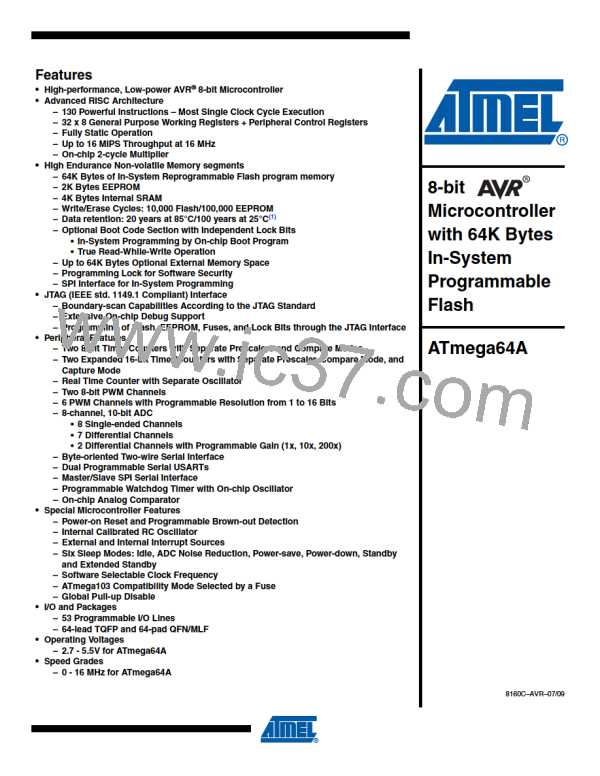ATmega64A
Receiver will generate a parity value for the incoming data and compare it to the UPMn0 setting.
If a mismatch is detected, the UPEn flag in UCSRnB will be set.
Table 20-9. UPM Bits Settings
UPMn1
UPMn0
Parity Mode
0
0
1
1
0
1
0
1
Disabled
Reserved
Enabled, Even Parity
Enabled, Odd Parity
• Bit 3 – USBSn: Stop Bit Select
This bit selects the number of stop bits to be inserted by the Transmitter. The Receiver ignores
this setting.
Table 20-10. USBS Bit Settings
USBSn
Stop Bit(s)
1-bit
0
1
2-bit
• Bit 2:1 – UCSZn1:0: Character Size
The UCSZn1:0 bits combined with the UCSZn2 bit in UCSRnB sets the number of data bits
(Character Size) in a frame the Receiver and Transmitter use.
Table 20-11. UCSZ Bits Settings
UCSZn2
UCSZn1
UCSZn0
Character Size
5-bit
0
0
0
0
1
1
1
1
0
0
1
1
0
0
1
1
0
1
0
1
0
1
0
1
6-bit
7-bit
8-bit
Reserved
Reserved
Reserved
9-bit
• Bit 0 – UCPOLn: Clock Polarity
This bit is used for synchronous mode only. Write this bit to zero when asynchronous mode is
used. The UCPOLn bit sets the relationship between data output change and data input sample,
and the synchronous clock (XCK).
Table 20-12. UCPOL Bit Settings
Transmitted Data Changed
(Output of TxD Pin)
Received Data Sampled
(Input on RxD Pin)
UCPOLn
0
1
Rising XCK Edge
Falling XCK Edge
Falling XCK Edge
Rising XCK Edge
199
8160C–AVR–07/09

 ATMEL [ ATMEL ]
ATMEL [ ATMEL ]